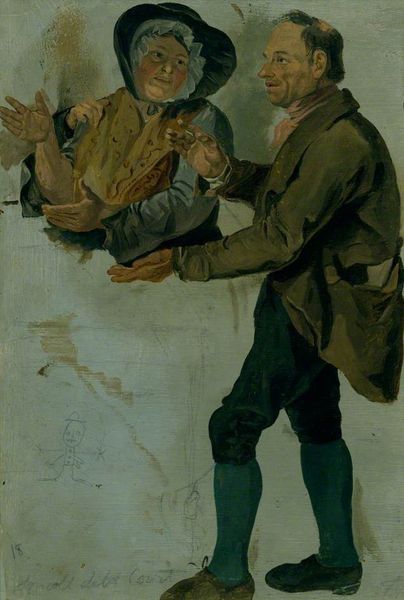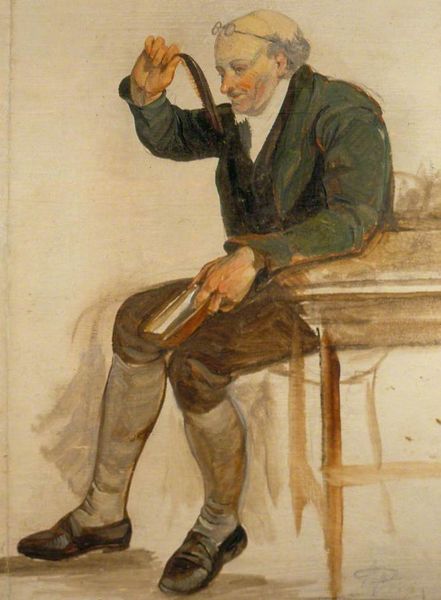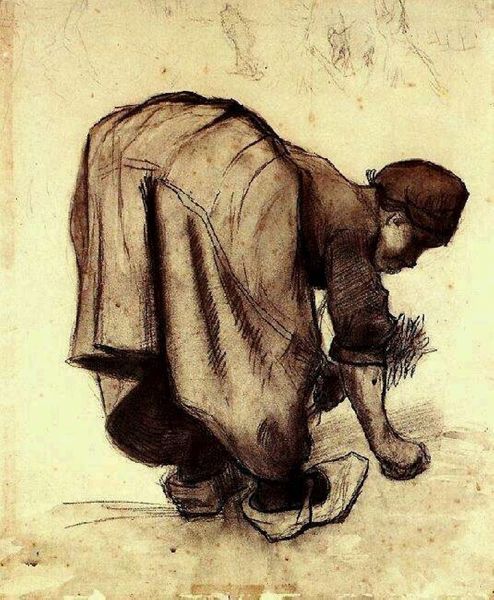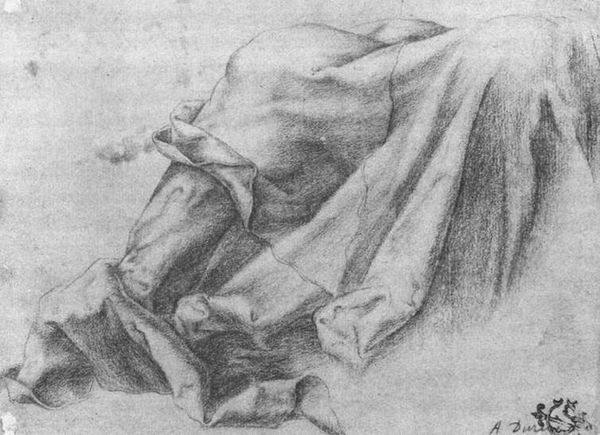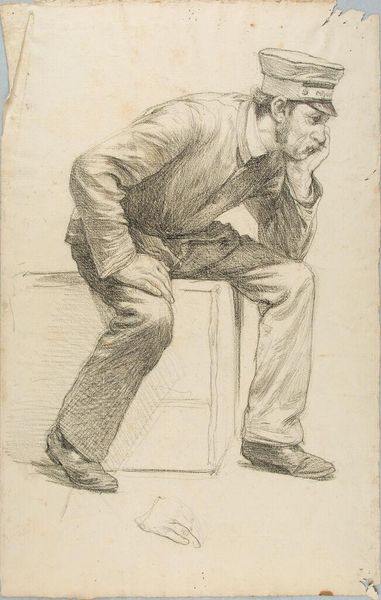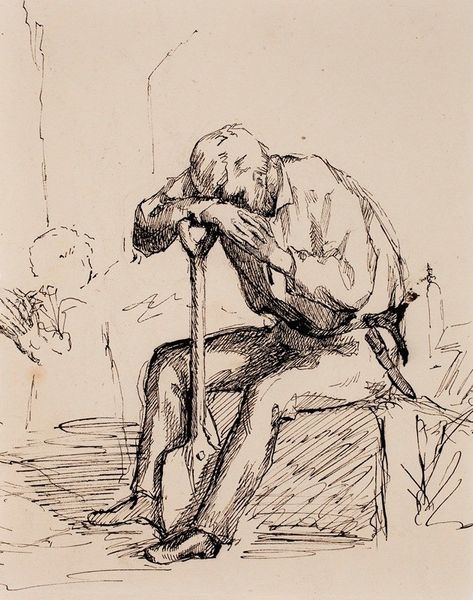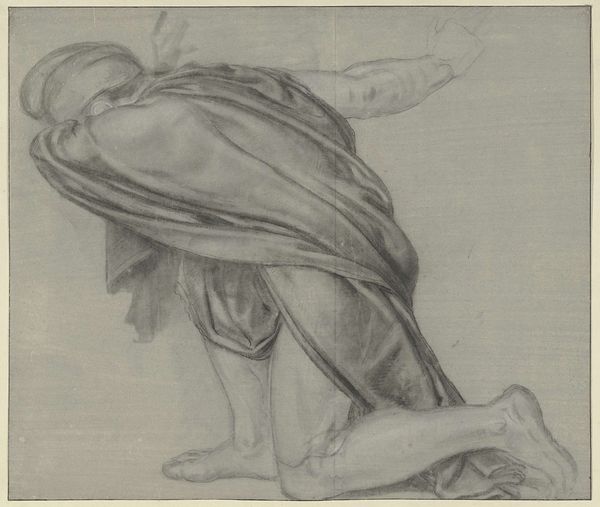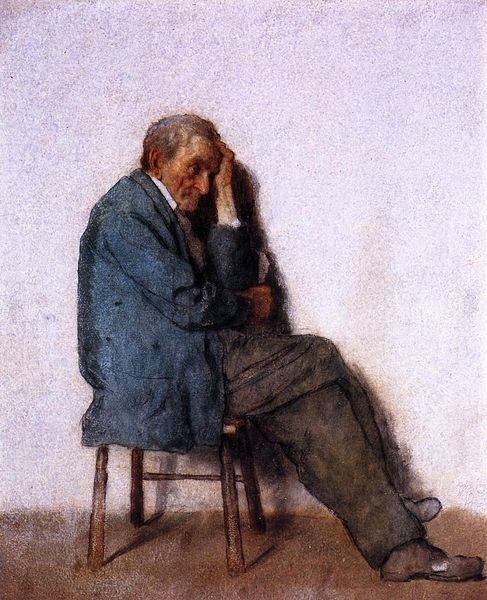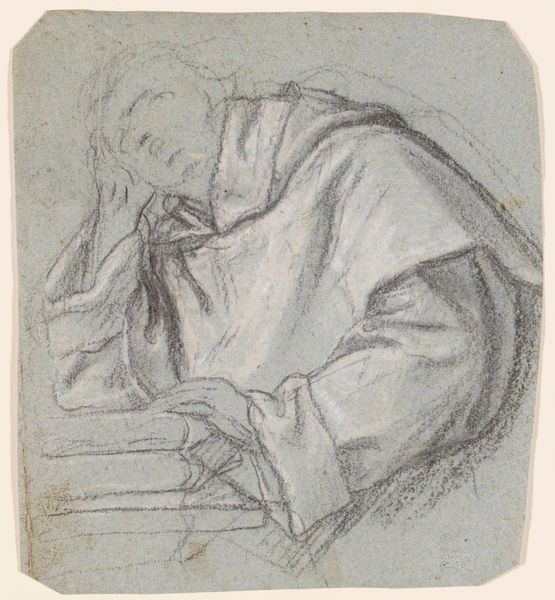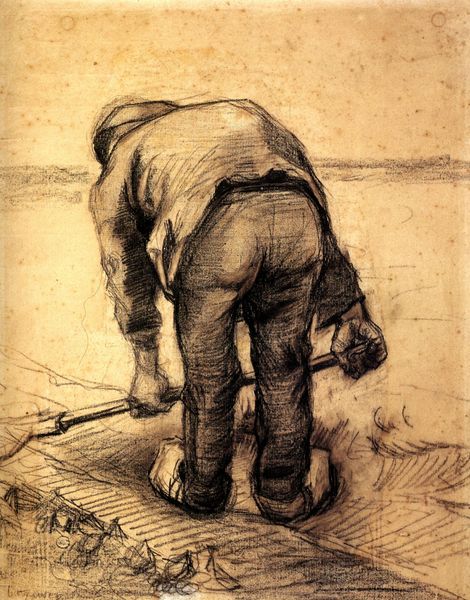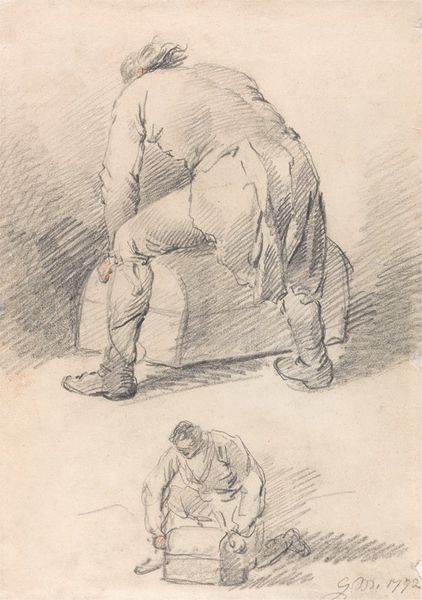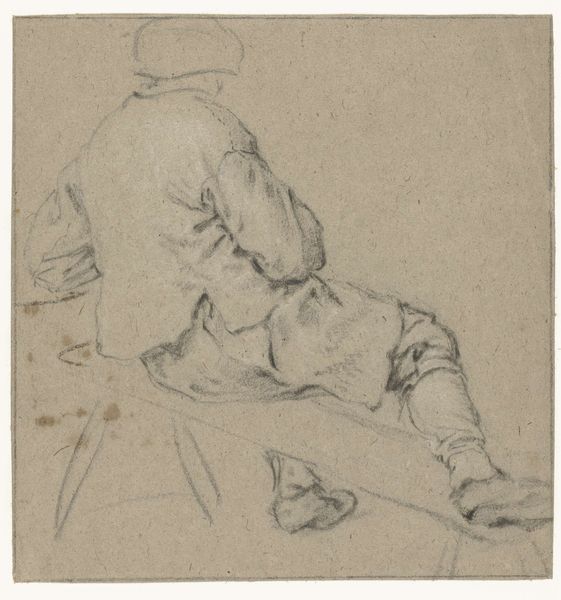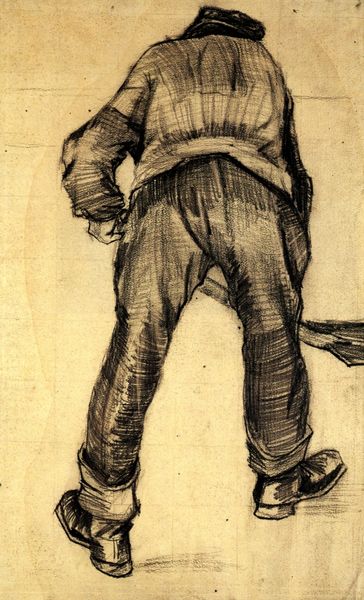
painting, oil-paint
#
portrait
#
painting
#
oil-paint
#
oil painting
#
portrait reference
#
romanticism
#
genre-painting
#
portrait art
Copyright: Public domain
Curator: George Harvey painted this intriguing genre scene, "Client in Court Securing His Papers," in 1827, rendered with oil on canvas. What strikes you first? Editor: It’s quite evocative, really. The figure hunched over, almost desperately gathering his documents… There's a palpable sense of anxiety or urgency radiating from the piece. A feeling that everything is on the verge of being lost, or maybe that some unfair action might be underway. The brown color amplifies this mood as well. Curator: That's interesting, considering the context. Harvey was painting during a time when legal proceedings were becoming increasingly accessible to the middle class, yet remained daunting. His rendering could then represent the common person navigating unfamiliar bureaucratic and legal systems. What would you say are some key symbolic elements? Editor: The papers themselves, obviously! Documents often signify authority, ownership, identity – all these abstract but essential constructs. And the man’s protective posture around them makes you wonder about their content. Maybe they hold something deeply personal or his livelihood hinges on securing these fragile records. Then you see in the back some columns, usually representing authority and/or structure, or institutions and social constructs of similar meanings. Curator: Absolutely. There’s an element of vulnerability to the work. You get a glimpse into what this sort of public setting – a courthouse – represented to everyday people during the early 19th century, namely the intimidating aura of established legal frameworks. Editor: I find the figure's covered face symbolic too. A kind of loss of self perhaps under the burden of the legal system or, more abstractly, his papers define who he is. It's intriguing how Harvey has layered such seemingly mundane objects with such potent significance. The romanticism elements also create a deeper sense of empathy. Curator: That empathy, I believe, made Harvey’s work popular. He taps into anxieties surrounding institutional power. Now the system had new possibilities for those outside of nobility but wasn’t necessarily set up for everyone. Editor: Seeing it this way gives you more depth. So instead of a random action of the client, we see it from the viewpoint of someone struggling with new powers to which everyone wasn't necessarily prepared for, as in not only knowledge about it but perhaps with no resources to tackle all its details. Curator: It all seems that it gave it a stronger statement on social structure, showing how the legal context has shaped people’s emotions, something clearly relevant even today.
Comments
No comments
Be the first to comment and join the conversation on the ultimate creative platform.
